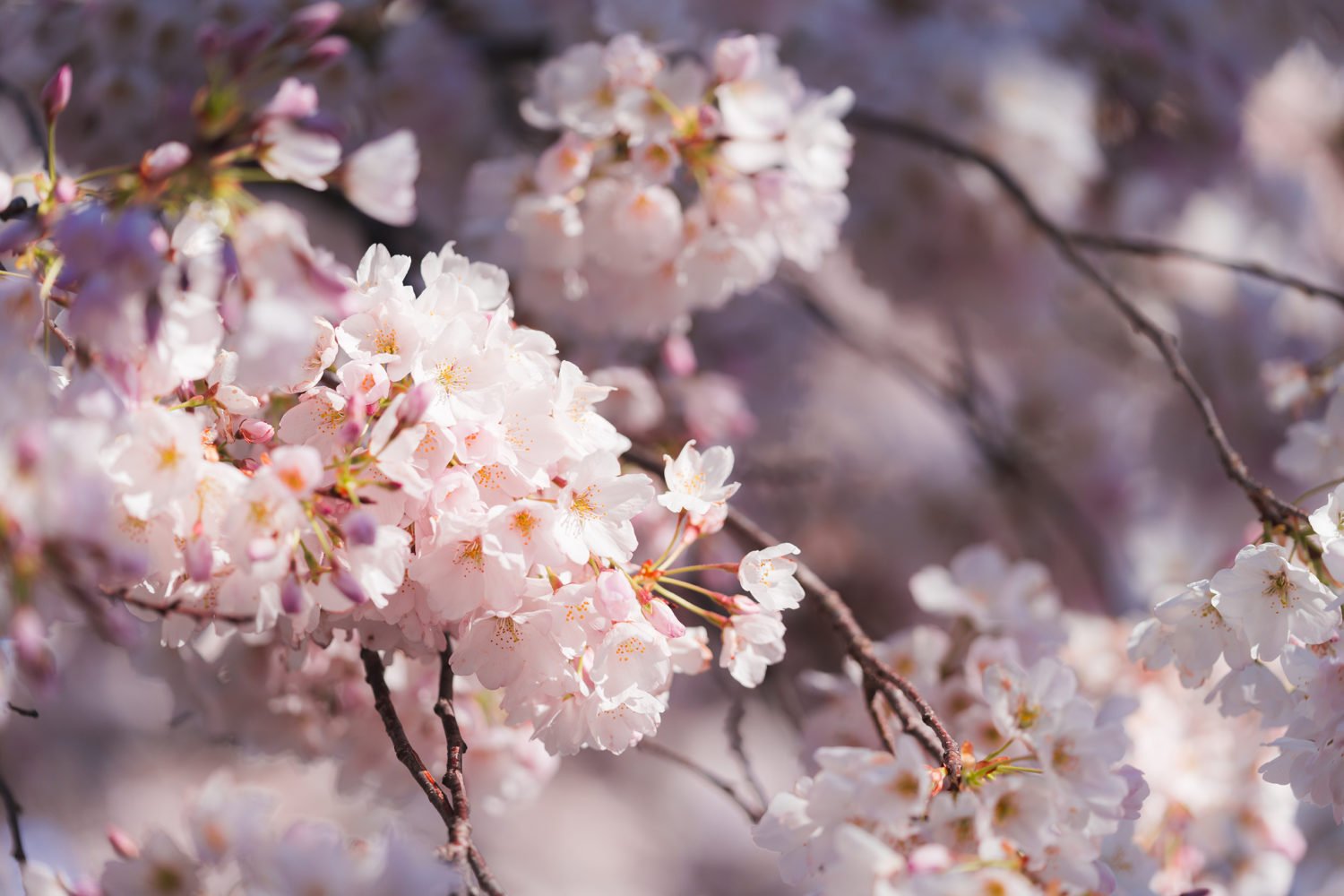An early-spring snowstorm dumping as much as half a foot on Washington on Wednesday upended work schedules, restaurants, and transportation. But the National Park Service says it doesn’t expect the storm to have much of an impact on the cherry trees around the Tidal Basin.
While a coating of wet and heavy snow is unusual for late March, the cherry blossoms are not far along enough in their development for the storm to ruin the arrival of peak bloom, defined as when more than 70 percent of the nearly 3,000 Yoshino cherry trees on the Tidal Basin are blossoming. The trees are still expected to peak between March 27 and March 31, NPS spokesman Mike Litterst says.
“The snow itself is not a threat at this stage of the bloom cycle,” Litterst tells Washingtonian. “Of greater concern are temperatures well below freezing…and then only if the blossoms are starting to come out.”
Late blasts of winter weather can damage the blossoms, as it did last year when plunging temperatures in mid-March resulted in a less-vibrant-than-usual peak bloom. But the trees are only in the second stage of their budding process, with florets becoming visible about three days ago. The trees still need to go through floret extension, peduncle elongation, and a puffy-white phase before peaking. The arctic weather that blasted the mid-Atlantic last March with temperatures below 25 degrees arrived when the blossoms were on the verge of peak bloom, resulting in an underwhelming finish.
Even though it’s not as cold this year, there is still a bit of danger from the snow, Litterst adds. The wetness of Wednesday’s snowfall could cause some branches to snap off under its weight. But for now, the forecast is holding.





















